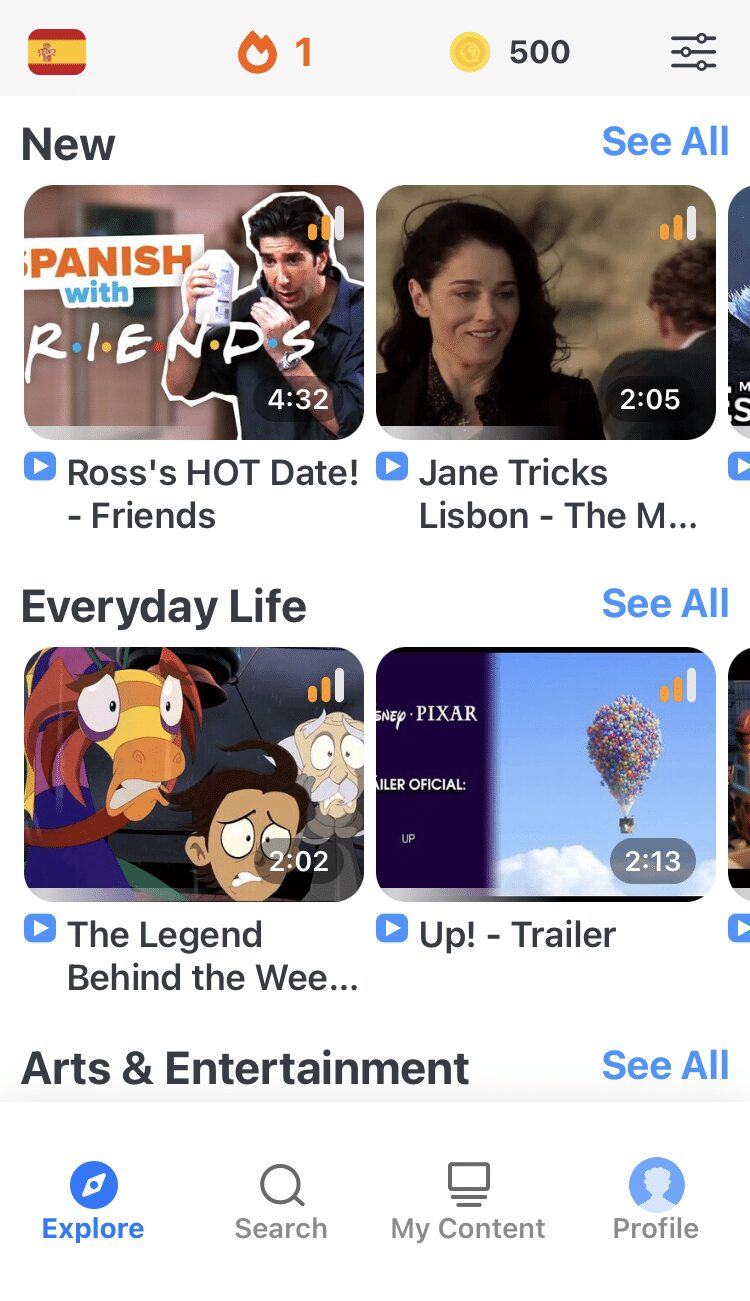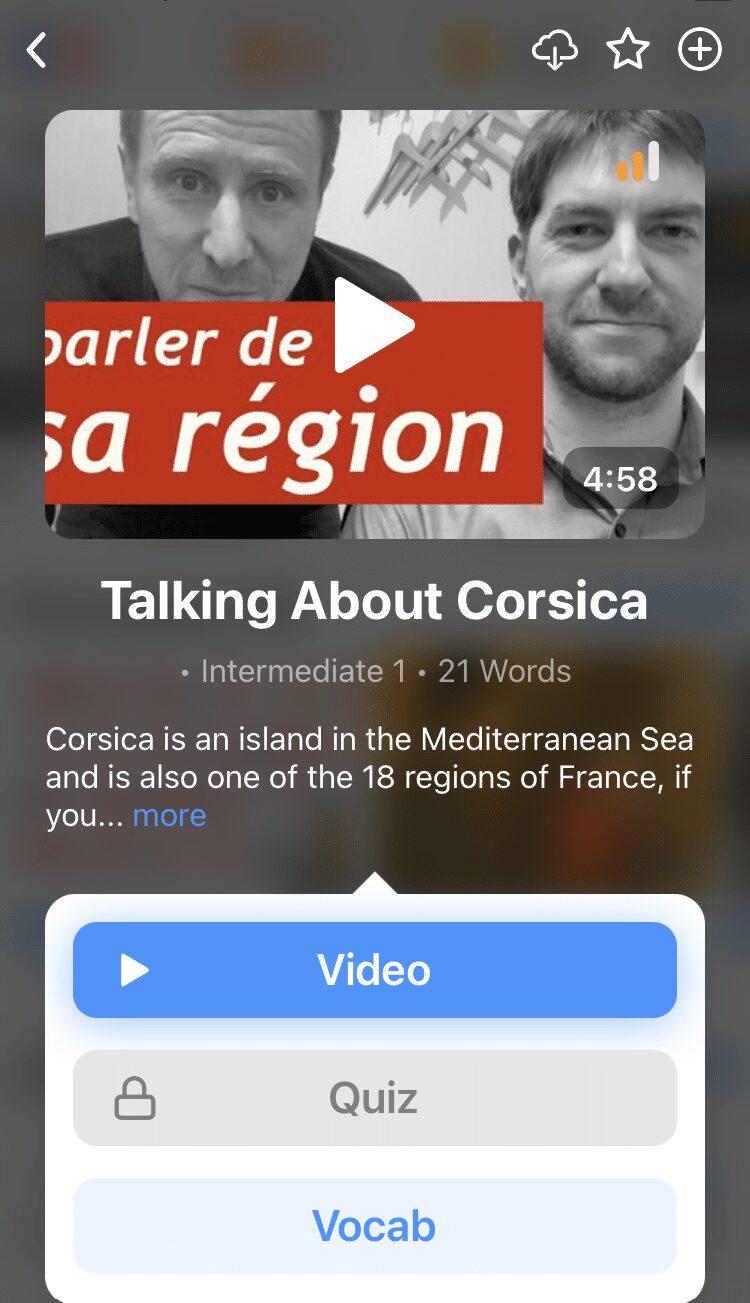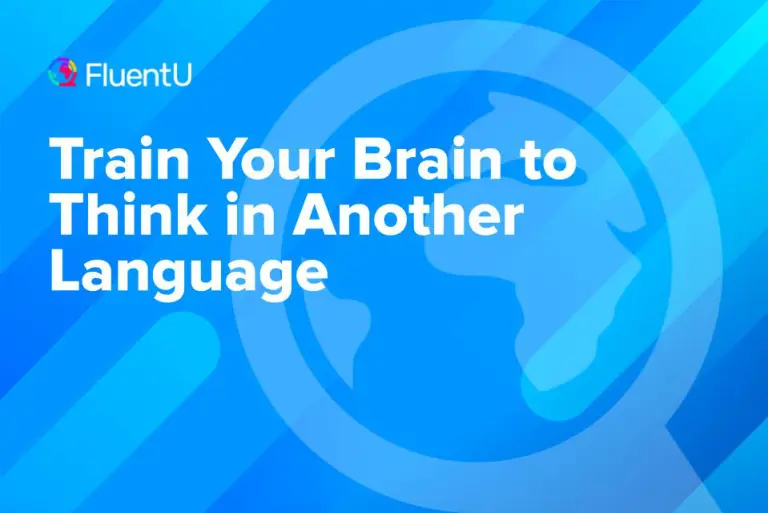The Natural Approach to Language Learning

How did 7.8 billion people become so fluent in their first languages? How did and when did they become so good, and at what point did they stop stammering awkwardly and making rookie mistakes?
In this post we’ll look deeper into the processes and techniques of first language acquisition. Using the lens of the Natural Approach Theory (a learning method that focuses on communication and language exposure), we can discover how native speakers learned their languages and how you can do the same.
Download: This blog post is available as a convenient and portable PDF that you can take anywhere. Click here to get a copy. (Download)
What is the Natural Approach to Language Learning?
The Natural Approach is method of second language learning that focuses on communication skills and language exposure before rules and grammar, similar to how you learn your first language.
Who Proposed the Natural Approach Method?
The Natural Approach language learning theory was developed by Drs. Stephen Krashen of USC and Tracy Terrell of the University of California, San Diego.
Dr. Krashen is a linguist and researcher who focused his studies on the curious process of language acquisition. Dr. Terrell, a fellow linguist, joined him in developing the highly-scrutinized methodology known as the Natural Approach.
What Does “Natural” Mean?
The theory is based on the radical notion that we all learn a language in the same way. And that way can be seen in how we acquire our first languages as children.
If we want to know the secrets of picking up a new language, we should observe how a child gets his first. And hey, we know it works because we have 7.8 billion humans on the planet who, on a daily basis, wield their first language with astonishing fluency.
The term “natural” almost presupposes that there are unnatural methods of learning a language. To doctors Krashen and Terrell, these are the structural approaches to learning—the grammar method that deconstructs a language into its component pieces, and the listen-and-repeat drills that happen in classrooms.
In the Natural Approach, there’s almost a zen-like attitude towards acquiring a language.
You’re not forced to utter words or phrases, much less pronounce them correctly. There are no endless drills on correct usage, no mentions of grammar rules or long lists of vocabulary to memorize. There’s no hurry or worry in your learning.
By continuously exposing you to the language, to how it’s used in different situations and by giving you meaningful and memorable inputs (like a child’s experiences with his or her parents), a spontaneous emergence of speech happens.
The Principles of the Natural Approach
The basic principles of the theory can be broken into four major stages of language acquisition.
1. Pre-Production
The first stage in the Natural Approach is known as pre-production and is essentially a silent phase, where nothing seems to be happening.
Children have this stage when they’re not really talking at all. It seems nothing is going on. You’re essentially getting nada. No utterance, just a blank stare.
Actually, so many things are happening. They’re listening. Picking up on meanings. Reading context clues. Interpreting and making guesses on what is being said. Making mistakes and honing their guesses.
2. Early Production
The next stage, early production, is when babies start uttering their first words, phrases and simple sentences.
The focus is still on comprehension. But this time, the crux of the issue is “Are you being understood by the other person?” (Again, you don’t need perfect grammar for this.)
Bothering with correct grammar comes late in the acquisition stage. In the Natural Approach, the early stages are replete with grammatically incorrect communication that aren’t really implicitly corrected.
When a child says, “I drinks,” mommy doesn’t give him a firm scolding. She finds it cute and then hands him a drink. But that child is slowly getting fluent with his first language. He’s communicating and using language to express what he wants, and all that’s happening without any direct grammar lessons.
3. Speech Emergence
Over time, the child’s singular words and short phrases will transform into lengthier ones. Thus enters the speech emergence stage.
The sentences, while longer, are still relatively basic and are likely to contain a lot of mistakes in grammar, pronunciation or word usage. However, the progress is undeniable as more content is added to the speech.
Moreover, it would seem that the child is inclined to actually work through and craft sentences for the sake of communication. At this point, the child’s level of understanding others’ speech is quite high.
4. Intermediate Fluency
Progress to fluency continues as more exposure to the language happens.
The (meaningful) linguistic experience stacks up so fast so that when that child sits waiting for his first grammar class, he’s already chatting non-stop with his seatmates, with perfectly decent grammar, even before the language teacher arrives.
This is the final stage, known as intermediate fluency.
And when the lessons do come, the child is just getting to peek behind the scenes to see the specific rules (grammar) guiding his own language usage.
All that’s explained to him is the rationale, the nuances of communication, behind the groupings of words he’s been using naturally all along. It’s all a review of what he already innately knows.
And that’s what Natural Approach is all about. It’s looking back to first language acquisition and using the whole bag of tricks there in order to get the same kind of success for second (and third, fourth, fifth, etc.) language acquisition.
Just because you’re learning another language doesn’t mean you have to reinvent the wheel. The expectations and the learning curve might be different for adults, but the underlying human, mental and psychological mechanisms are the same.
The Characteristics of Natural Approach
Input
Input refers to what’s being relayed to the language learner—the “packages” of language that are delivered to and received by the listener.
The Natural Approach puts high emphasis on not just the amount but also the nature of the input received.
Input is also known as “exposure.” For proper, meaningful language acquisition to occur, the input should also be meaningful and comprehensible.
Comprehension
In the Natural Approach, the initial focus really is on comprehension. The crux of the issue is, “Do you understand what is being said?”
You don’t need to notice subject-verb agreement for this.
Understanding the meaning of something can be done in a variety of ways besides technical grammar breakdowns. Comprehension must precede production for true internal learning to be done.
Communication
When it comes to language acquisition, the Natural Approach places more significance on communication than grammar.
In order for the child or learner to eventually produce their own sentences, it’s more crucial that he or she is constantly exposed to meaningful communication than grammar lessons.
The Theory of Learning
The Natural Approach is a method of language teaching, but there’s also a theoretical model behind it that gives a bit more detail about what can happen during the process of internalizing a language.
This model consists of five major hypotheses.
For the most part, they repeat a lot of what was already previously described, but they provide a workable framework that can be picked apart for crafting learning strategies (we’ll get into that after!).
Acquisition Learning Hypothesis
There are two distinct ways to learn a language.
One way is via acquisition and is akin to how children acquire their very first language. The process is not conscious and happens without the learner knowing. The gears are already turning as the learner processes the second language and uses it almost strictly for communication.
The second way is learning, the conscious method that involves the learner actively studying and gaining formal instruction about the language and its rules. Learning focuses more on the technicalities of the language.
Between the two, acquisition is more significant in enabling language fluency.
Monitor Hypothesis
This hypothesis states that the language learner’s knowledge gained from conscious learning is largely used to monitor output rather than enabling true communication. In other words, the “learned” system functions as a language checker.
Meanwhile, the knowledge gained from acquisition does enable spontaneous speech and language production. The “acquired” system is what grants learners the ability to actually utilize the language.
Monitoring via the learned system requires the learner to essentially take a mental pause before saying anything. The phrase-to-be is scanned for any errors and may be corrected accordingly based on the learned rules and grammar.
Input Hypothesis
In order for proper language acquisition to occur (and be maintained), the learner must be exposed to input that’s slightly above their current level of understanding.
The basic formula for this kind of input is “i + 1” in which “i” represents the learner’s language competence.
Essentially, the language exposure must be a step ahead in difficulty in order for the learner to remain receptive and ready for improvement.
Natural Order Hypothesis
On the acquisition level, learning a language occurs in a natural and predictable order.
The grammatical rules of a language are internalized in a set, predetermined sequence, and this sequence isn’t affected by actual formal instruction.
The hypothesis also suggests that learners of the same language can expect the same natural order. For example, most learners who learn English would learn the progressive “—ing” and plural “—s” before the “—s” endings of third-person singular verbs.
Affective Filter Hypothesis
Language acquisition doesn’t occur in a vacuum. In fact, the learner’s emotions, or affect, and attitude can either improve or impede the process.
“Affective filters” can thus play a large role in the overall success of language learning.
Negative emotions can put a noticeable hamper on language acquisition. When a learner is feeling anxious, embarrassed or upset, his or her receptivity towards language input can be decreased. This makes it harder to learn or process language features that would otherwise be readily processed.
Conclusively, it’s important that a learner is relaxed and keen to improve. Having a comfortable language-learning environment can thus be a great aid.
So in the next section, we’ll look at five powerful first language acquisition strategies that you can perfectly apply to acquiring that second language and answer the question: “How can I learn a language effectively?”
How to Learn a Language with the Natural Approach
1. Don’t Learn the Language, Acquire It
The first thing to notice in The Natural Approach is that there’s an important difference between “learning the language” and “acquiring the language.” And like mentioned earlier, it all has to do with the activities involved in each.
“Learning” involves conscious instruction. When you memorize usage rules and vocabulary, when you memorize the different conjugations of the verb, when you’re concerned whether or not the tense used is correct—those are all “learning” related activities.
“Learning a language” means you’re studying a language, its linguistic forms (grammar, semantics, phonology) and how the different elements interact with each other. Most “learning” activities happen inside a classroom, but you could certainly manage to do these independently.
“Learning the language” will get you good grades, but it won’t necessarily lead to fluency.
“Acquiring,” on the other hand, involves different activities that are, for the most part, communicative and immersive in nature.
Meaning, these activities give you plenty of opportunities to listen, observe and experience how language is used. And, even better, these activities give you plenty of opportunities to use the language in order to communicate.
For example, you’re living with an Armenian family. You get to hear what the mom screams when she wakes the kids up in the morning, or what she says when she calls them to the table for dinner. You hear grandma talk to you in Armenian because she often forgets that you’re not one of her granddaughters.
Every day you find yourself exposed to the language. You’ll slowly pick up the language. You’ll be able to work out the context of things being said and work out their meanings. Maybe the dirty words first. Then you’ll pick up their expressions, then maybe the adjectives and verbs, and so on and so forth.
This is inevitable. The receptive nature of your brain will ensure that.
Exposure to language is big when you want to acquire it rather than “learn” it. So as a language learner (or rather, “acquirer”), you have to put yourself in the way of language that’s rife with action and understandable context.
Watch movies, listen to songs, enjoy some podcasts, read (children’s) books and talk with native speakers.
You’re not required to understand everything. See, hear and get a feel for how your target language is used by native speakers.
You can also change the language option of your gadgets and social media accounts so that they display in the target language of your choice. You can also make your home a hub of language learning by using Post-Its to label the different objects that you use every day in the language of choice.
Outsource your label-making for the most important vocabulary words by using a Vocabulary Stickers set, which gives you well over 100 words to put on items you use and see every day around your home and office.
There’s so much you can do, short of going to a country where your target language is spoken, to make picking up a language as immersive and as natural as possible.
2. Break the Rules Early, Make Mistakes Often
Now, don’t take all that’s been said before this to mean that grammar doesn’t matter at all or that you should never correct the initial mistakes you make.
But the point is, grammar doesn’t come early in the game. In fact, it really gains purpose when you’ve had plenty of experience with the language.
In the early stages of picking up a language, you have to be open to making plenty of mistakes and looking foolish. That means opening your mouth even when you’re not sure if you got the pronunciation or accent right, or even when you’re not confident of the words you wanted to say.
You’ll make mistakes. That’s for sure. And you’ll have to be indifferent to those mistakes. The world doesn’t end when you commit a booboo, even when you come out looking foolish.
A practical thing you can do is to get some conversation practice online with a native speaker.
For example, on one of the most popular language exchange sites, you can Skype somebody who’ll be very open to teaching you and listening to you barbarize his native tongue. He or she will just be glad that you expressed an interest in their native language.
You don’t have to speak in just the target language. Switch to English mid-sentence if you have to. Be honest about your skill level early on and you’ll reduce a lot of anxiety.
Now the native speaker will be gracious and try to correct the mistakes. Take them with equal grace. But remember that correcting grammar isn’t really the top priority.
It’s actually getting a feel for committing those mistakes and coming out with the realization that, “Hey, I’m actually fine! I made 600 mistakes today and survived.”
I want you to be very good at this. I want you to know that it’s no big deal. So claim your absolute divine right to make mistakes. Just like a child.
3. Get Exposure to Different Situations with Different Senses
Going to a country to acquire its national language only works when you’re actually exposing yourself to the myriad of available experiences in the country of choice.
A change in geography won’t do you any good if you only keep to yourself or associate exclusively with fellow English speakers.
You don’t even have to up and leave just to get exposure and immersion. Again, you don’t need a passport to have the needed immersion. Getting a language learning partner is one method for doing this and was already pointed out earlier.
Another method is actively seeking out the native speakers who are living in your area. Chances are they already have a local association that hosts cultural activities such as food raves and language meetups like these in New York.
Attend these and you’ll find tons of fellow language learners (or rather, acquirers). Knowing that there are others who are on the same journey will be a big boost.
Remember that when you’re going for exposure and immersion, you should always try to get it in different situations and have the experiences fully stimulate your senses.
Bathe yourself in the same experiences that native speakers have. Eat their food, listen to their music. Read the headlines of their newspapers. Find out what’s up with their local celebrities.
If you want to learn Chinese, spend a day in Chinatown. Dive into the rich underbelly of Chinese culture and you’ll come out with priceless insights, not to mention some really interesting home décor.
Get into some stores there and try to ask about the different stuff they sell. Haggle prices. Watch out for hand gestures and you’ll have learned something not found in grammar books.
Get some food packs and try to make out what’s written on the backs of packages. You’ll learn plenty of contextually rich Chinese just by befriending the characters on those food labels.
The stuff you’d ignore in your native language can be priceless study material in your target language. For example, unless you’re a parent, you’re probably not binge-watching children’s songs on YouTube. You probably don’t spend a lot of time watching commercials on purpose.
But that’s exactly the kind of stuff you need to be absorbing in your target languages.
Some virtual immersion platforms capitalize on this wealth of content.
FluentU, for example, has a dedicated section for kid-oriented videos. The program also has many other types of videos for language learning and you can get different kinds of sensory exposure.
FluentU takes authentic videos—like music videos, movie trailers, news and inspiring talks—and turns them into personalized language learning lessons.
You can try FluentU for free for 2 weeks. Check out the website or download the iOS app or Android app.
P.S. Click here to take advantage of our current sale! (Expires at the end of this month.)
Contextual learning makes it easier to remember new vocabulary, sentence constructions and grammar concepts. Expose yourself to authentic language as soon as you can in your learning, to always give your learning context.
4. Work with Materials That Suit Your Level
Nobody would hand a physics book to a toddler, right?
One of the tragedies that befall many who try to acquire a language is that they use the wrong materials for their level. When someone gives up on a language, you usually hear one of these excuses:
“The audio was too fast.”
“I couldn’t understand a word in the book.”
“The sentences are too long.”
“I didn’t have enough time to digest what my partner was saying.”
It doesn’t mean that the language is too hard or the person is too slow. They didn’t stand a chance because the materials they got exposed to were too advanced, stepping beyond the “i + 1” formula of the input hypothesis.
It became gibberish and had no place in the memory to be anchored in.
The tragedy is that this person would’ve been perfectly able to acquire the language had they been using materials that were more approachable for them.
That’s why we start beginners with children’s books—where the target language is in bold, capital, colorful letters, where the sentences are simple and where pictures help the folks figure out the meaning.
For exposure to be meaningful, it should be in the general area of the learner’s competency. For example, it should be easy enough so that a reader already understands at least 50% of the words in the sentences. (The remaining 50% is the room where the learner grows.)
Imagine a mountain climber ascending a steep rock. He doesn’t reach for those grips that are several meters above him. Nope, he reaches for one an arm’s length above, while the other hand is keeping him safe and steady.
So instead of banging your head against materials that prove how much you don’t know, go for materials that say, “Yeah, you already know this. But look, there’s more!”
Instead of challenging yourself with materials that ultimately overwhelm you, strategically choose materials that you know you can master given enough time and effort.
5. Make the Road to Fluency Stress-free
There are people who require pressure to really shine.
These are your Tiger Woods, your Michael Jordans and your Steven Spielbergs.
If there’s no pressure to be found, they push themselves to extract that special performance, that special shot that only they can deliver.
These people aren’t the norm. (That’s why they get paid indecent amounts of money.)
For sure, some amount of stress or anxiety is constructive—especially in fields like medicine, law and business. But in the phenomenon of language acquisition, our friend Dr. Stephen Krashen asserts that anxiety should be zero, or as low as possible.
Refer back to the affective filter hypothesis.
For a language to be successfully acquired, motivation must not only be high, but anxiety must also be low.
Otherwise, all the language inputs we’ve talked about earlier will find no home in the brain. When a person is highly anxious, the immersive experience loses impact and no amount of stimulation will be comprehensible input.
The pressure of a language test might push you to learn a language by memorizing plenty of vocabulary, drilling grammar rules and getting good grades, but it can’t always lead you to acquire language. (We’ve already distinguished “learning” and “acquisition” earlier, right?)
Language acquisition is about being so relaxed and so dialed into the conversation that you forget you’re talking in a foreign language. You become engrossed with the message or content, instead of the medium.
So shed off the pressure you put on yourself. Thoughts like, “I need to learn this now” or “I’ve got two months to learn this list” won’t be helpful to your cause.
Expose yourself to the language instead.
Watch your Spanish telenovela, eat your Chinese noodles after looking at the labels, enjoy that children’s book in French. Don’t even think about grades or timelines or milestones. Just put yourself in an environment where you can listen and read and observe how the target language is used.
If you do that, my guess is that your acquisition will move into high gear in the coming months.
And that’s really all there is to it!
I’ve just given you five powerful ways to achieve language acquisition, all backed by the scientifically proven Natural Approach. They’ve also been proven by 7.8 billion people.
So what are you waiting for? Go ahead and be a carefree child again.
After all, learning a language should be fun!
Good luck!
Download: This blog post is available as a convenient and portable PDF that you can take anywhere. Click here to get a copy. (Download)
And One More Thing...
If you dig the idea of learning on your own time from the comfort of your smart device with real-life authentic language content, you'll love using FluentU.
With FluentU, you'll learn real languages—as they're spoken by native speakers. FluentU has a wide variety of videos as you can see here:
With FluentU's Chrome extension, you can bring interactive learning tools directly to YouTube or Netflix, and even import your favorite YouTube videos directly into your FluentU account.
FluentU has interactive captions that let you tap on any word to see an image, definition, audio and useful examples. Now native language content is within reach with interactive transcripts.
Didn't catch something? Go back and listen again. Missed a word? Hover your mouse over the subtitles to instantly view definitions.
You can learn all the vocabulary in any video with FluentU's "learn mode." Swipe left or right to see more examples for the word you’re learning.
And FluentU always keeps track of vocabulary that you’re learning. It gives you extra practice with difficult words—and reminds you when it’s time to review what you’ve learned. You get a truly personalized experience.
Start using the FluentU website on your computer or tablet or, better yet, download the FluentU app from the iTunes or Google Play store. Click here to take advantage of our current sale! (Expires at the end of this month.)












